Scientists think the mysterious substance makes up most of the mass in the universe -- but because it doesn't give off light, visible proof of its existence is elusive. Theory suggests that the invisible stuff acts as gravitational glue that keeps the stars and galaxies from flying apart. Now, armed with powerful telescopes, tricky lenses and fast computers, scientists are at last bringing the evidence of dark matter to light.
For example, in this image, the yellowish galaxy cluster in the middle serves as a gravitational lens that bends the light of even more distant galaxies. Those galaxies appear as distorted blue streaks surrounding the cluster. Scientists can analyze the distortions to determine how dark matter is distributed in the cluster.
Super Clumpy
Dark matter, it turns out, may be rather clumpy stuff. This image shows a galaxy supercluster -- a grouping of hundreds of interacting galaxies -- about 2.6 billion light years from Earth. The bright blue spots are the visible galaxies, superimposed over magenta-tinted clumps that represent a detailed map of dark matter. The map was created by inferring how the light from even more distant galaxies is bent as it passes through the gravitational field of the supercluster, which is called Abell 901/902. Astronomers found that the supercluster's galaxies lie within the clumps of dark matter, and the irregular shapes of the clumps match the distribution of the galaxies.
Invisible Scaffolding
This 3-D map of the large-scale distribution of dark matter in the universe provides compelling evidence that the invisible stuff serves as the scaffolding upon which the stars and galaxies are hung. The map reveals a network of filaments that grow over time and intersect in massive structures at places where galaxy clusters are located. To make the map, astronomers used ground and space telescopes to determine the shape of half a million distant galaxies. This galactic light was bent and warped by the gravity of other galaxies as it traveled to the telescopes. By analyzing the shapes of these distant galaxies, astronomers were able infer the distribution of dark matter.
Bullet Proof
For proof that dark matter really exists, scientists turn to this image of a collision between two massive galaxy clusters that contains a bullet-shaped cloud of superheated gas. Theory suggests that during such a collision, a type of cosmic air resistance should slow down the hefty hot gas -- but not the dark matter. That's what this image shows. The hot gas, pictured in red, is separated by the dark matter, pictured in blue. Scientists say the image serves as strong evidence that dark matter really does exist.
Train Wreck
A massive collision of galaxy clusters about 3 billion years ago has proven to be a train wreck of sorts for dark matter theory. The prevailing theory suggests that the force of gravity should keep dark matter and galaxies together even during violent collisions, but that hot gas should lag behind due to the cosmic equivalent of air resistance. This image, however, shows the dark matter (blue) separated from most of the galaxies (yellow and orange). Scientists speculate that a gravitational slingshot effect may have separated the galaxies from the dark matter, or that the dark matter is interacting with some force other than gravity. Neither explanation fits well with existing theory. A third possibility is that the observations and calculations are off. Further research may yield an answer.
Ghostly Ring
Some rings signify marriage, others a Super Bowl victory. This one may signify that dark matter exists. Astronomers made this composite image of a ghostly ring of apparent dark matter (mapped in blue) around a cluster of galaxies about 5 billion light years away. Computer simulations of the ancient galactic collision that created the cluster provide clues to how the ring formed. During the smash-up, dark matter fell to the center of the combined cluster and then started to slosh back out toward the edges. But the pull of gravity caused the dark matter to slow and pile up like cars speeding into a traffic jam on the freeway.
Cold or Warm?
Assuming dark matter does exist, is it cold or warm? If some of the universe's earliest stars can be found, computer simulations suggest the issue could be resolved. Slow-moving particles of cold dark matter would have caused single, massive stars to form in isolation. Faster-moving particles of warm dark matter, in contrast, would have caused the stars of differing sizes to form on long, thin filaments of dark matter -- as pictured here. Since small stars are long-lived, they may still be lurking in our universe. Scientists hope to find them with new telescopes. - msnbc
The back up Blog of the real Xenophilius Lovegood, a slightly mad scientist.
Wednesday, March 19, 2008
Dark matter revealed!
Subscribe to:
Post Comments (Atom)
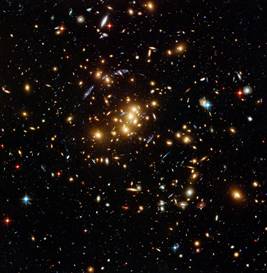
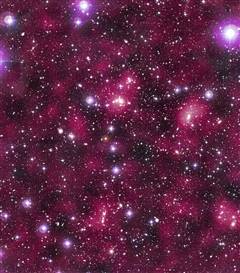


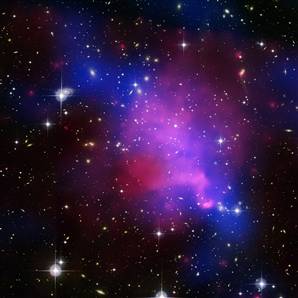
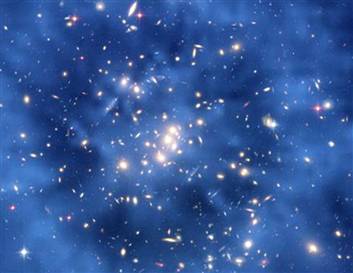
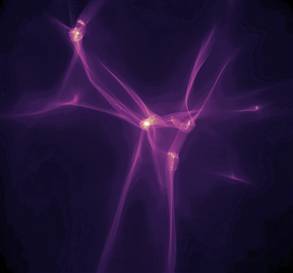
No comments:
Post a Comment